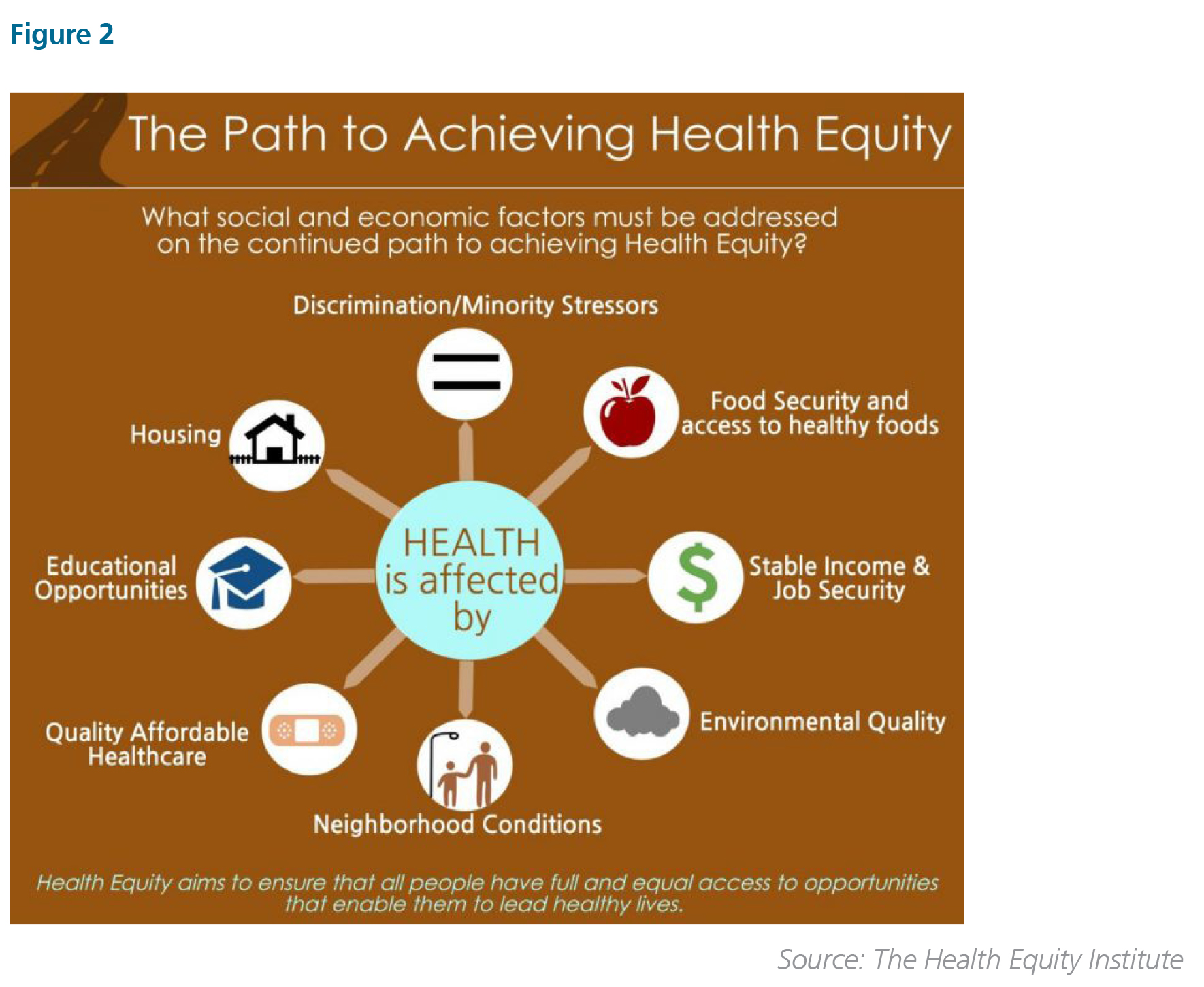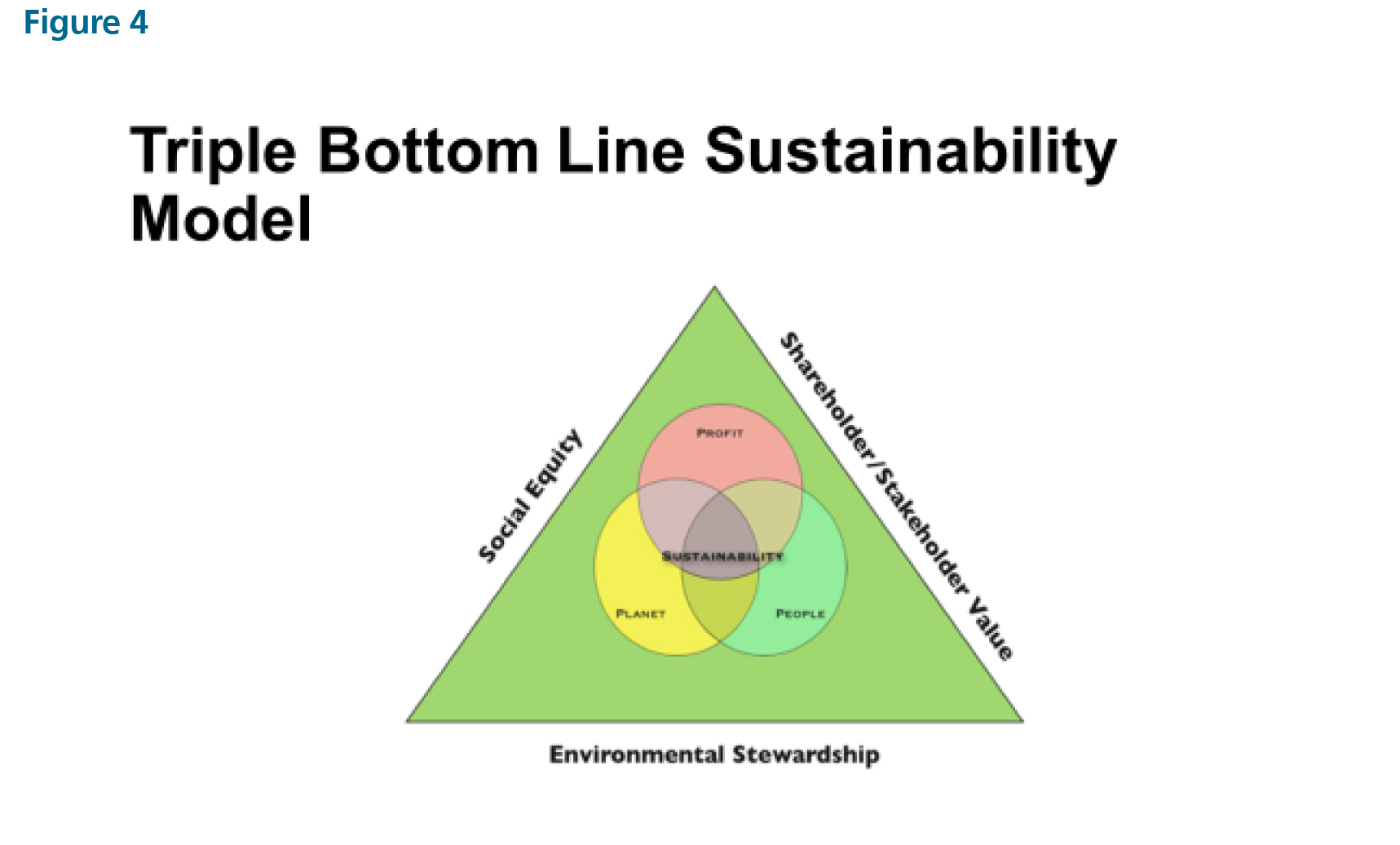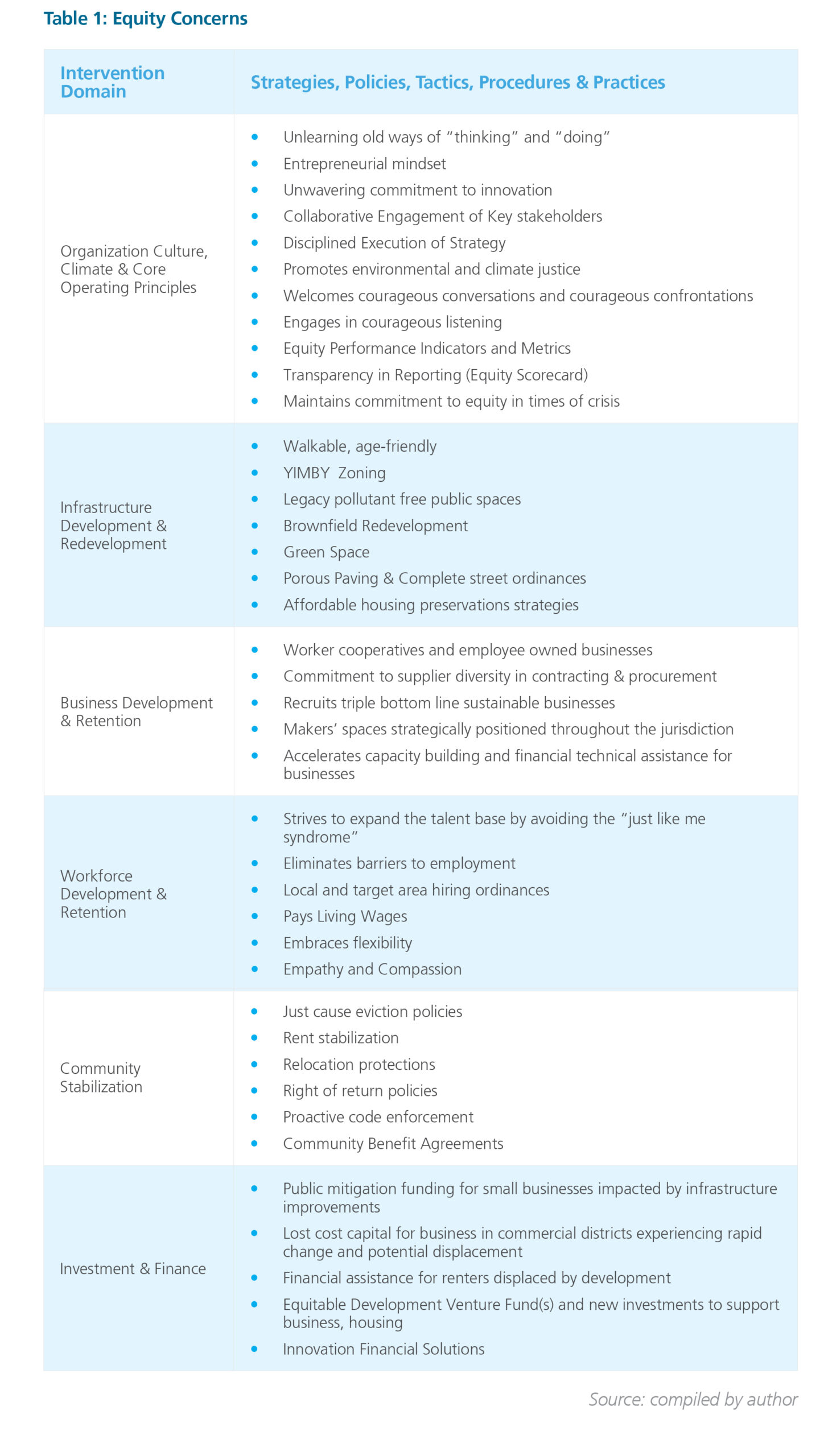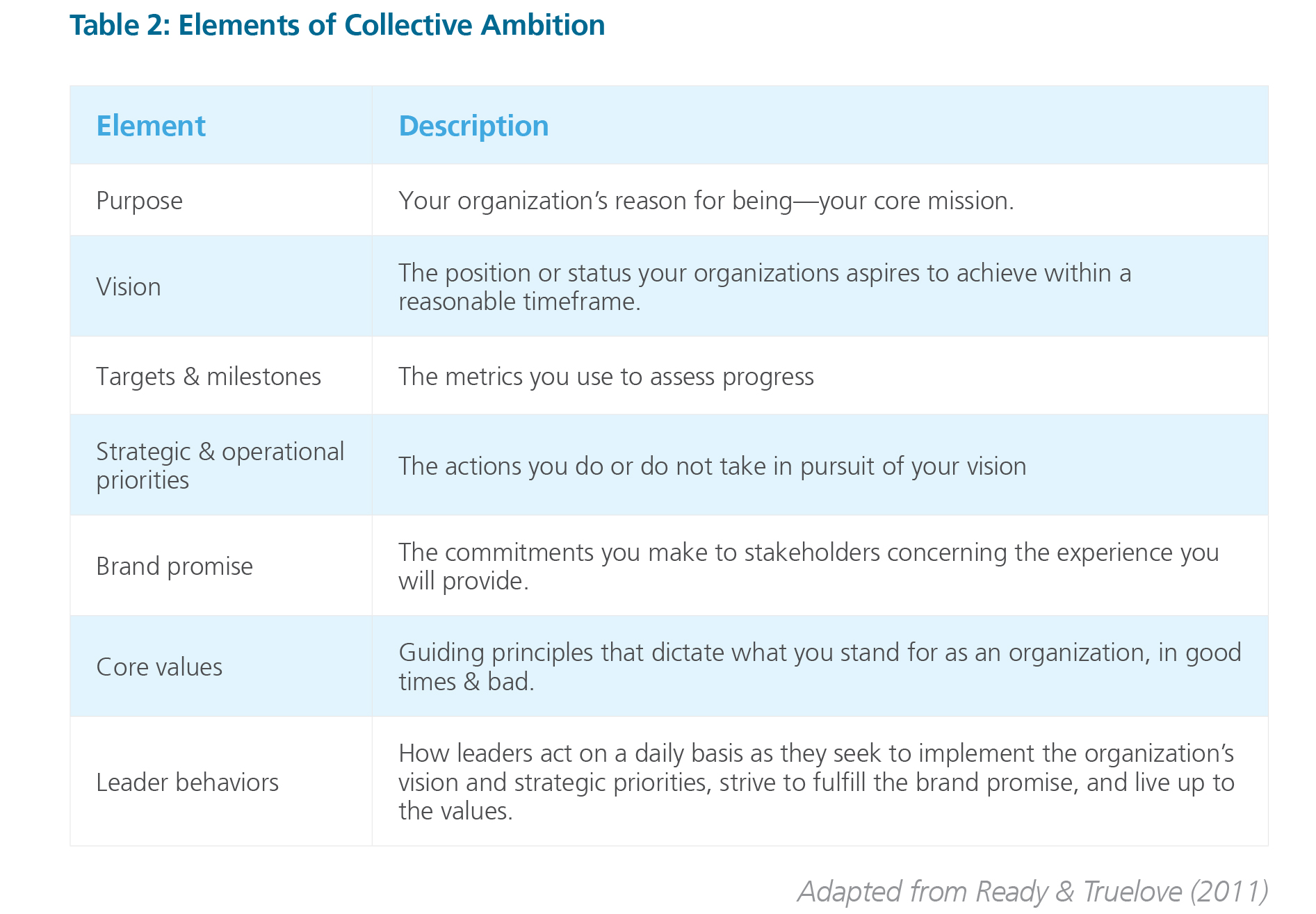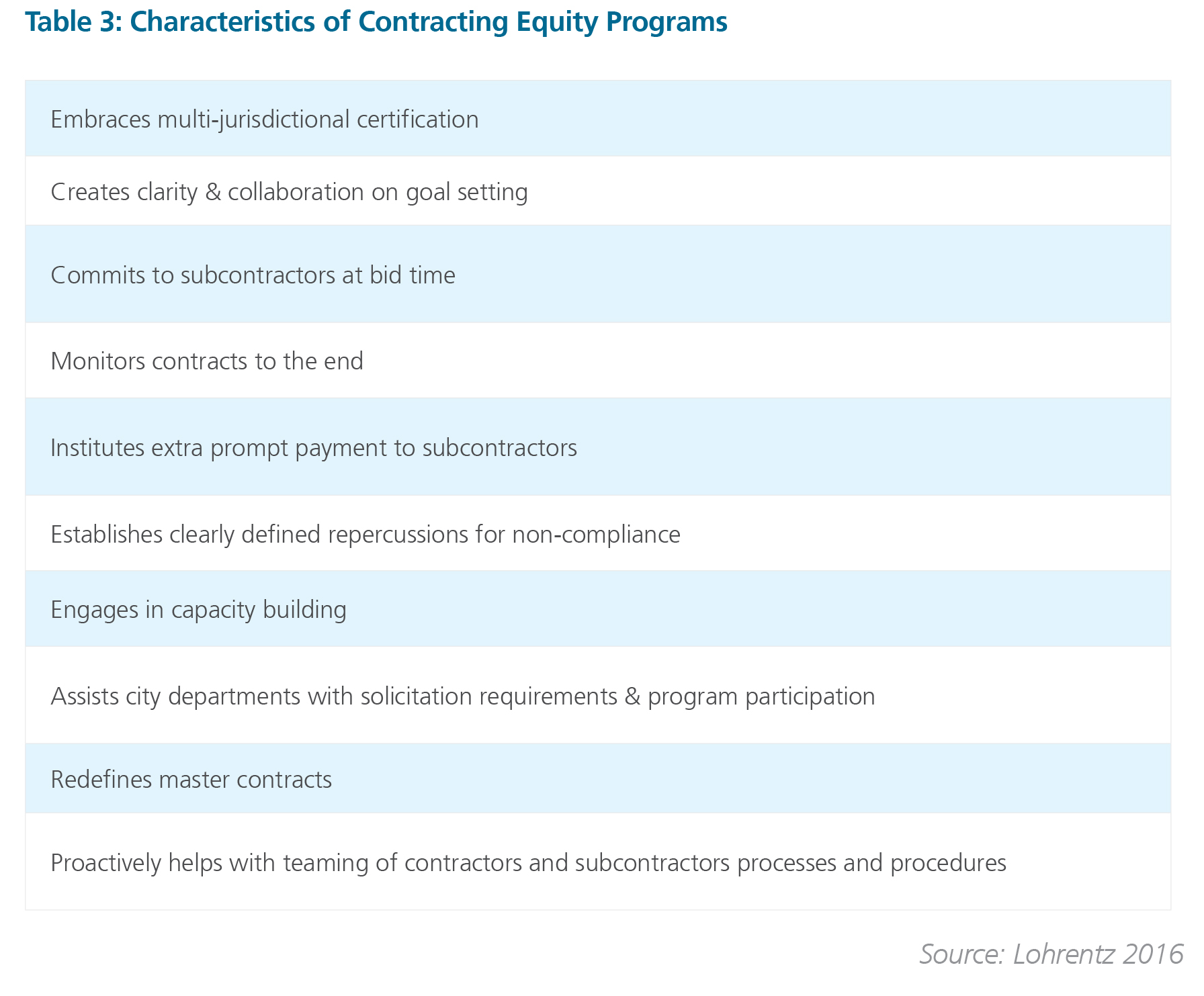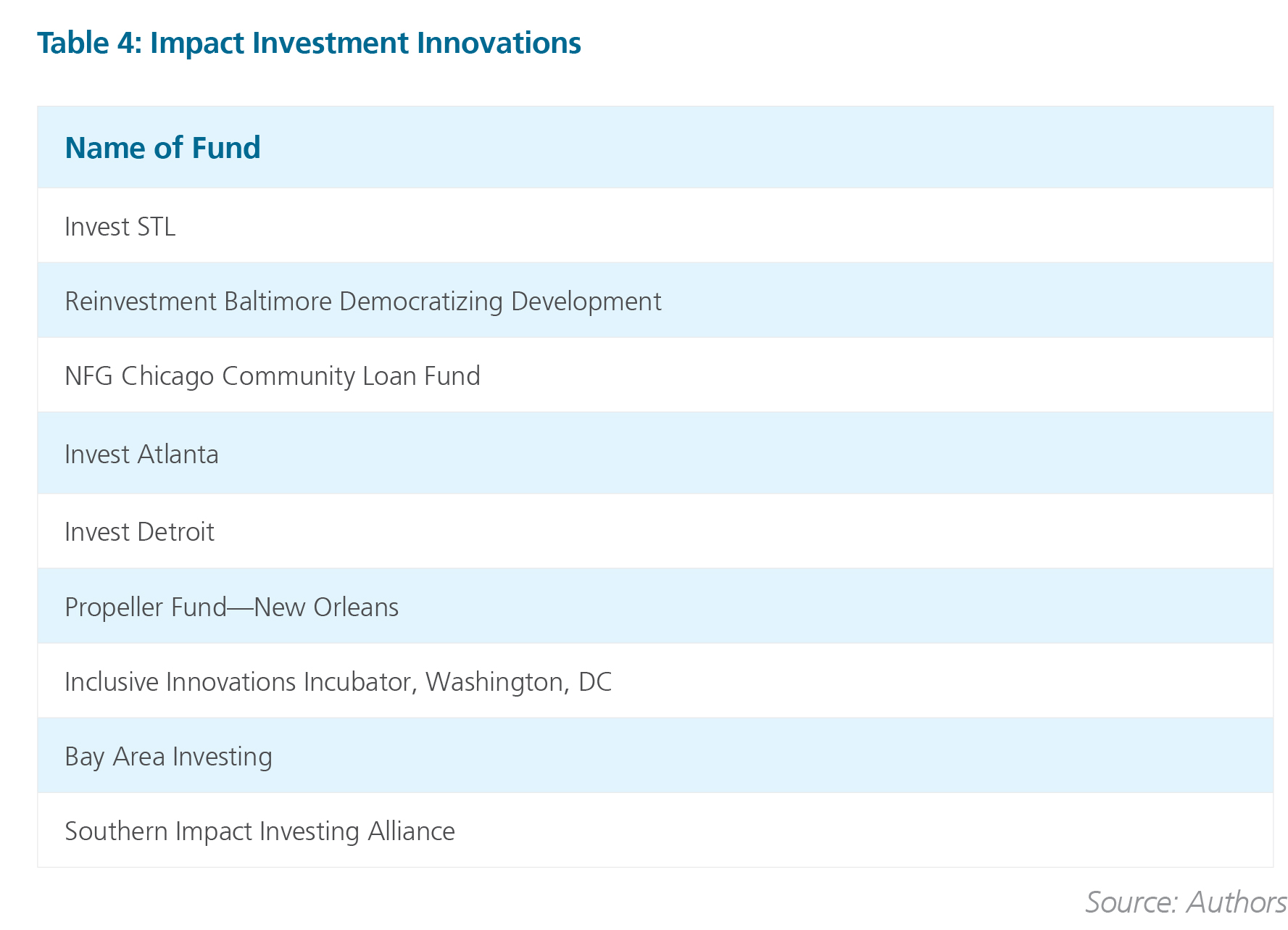Does Your City Have Reputational Equity?
Strategies, policies, tactics, procedures and practices cities will need to embrace to dismantle all forms of “Isms” and “Phobias”.
by by James H. Johnson, Jr., Ph.D. and Jeanne Milliken Bonds, MPA
of Kenan-Flagler Business School UNC-Chapel Hill
November 2020
Home | Publications | Does Your City Have Reputational Equity?
Abstract
Cities increasingly will have to demonstrate a strong commitment to reputational equity to remain attractive places to live, work, play, and do business given the racially and ethnically disparate impacts of Covid-19 pandemic and recent senseless killings of unarmed African Americans that spawned a nationwide protest movement. We leverage evidence-based best practices of inclusive and equitable development from the research literature to devise a reputational equity checklist—a portfolio of strategies, policies, tactics, procedures and practices cities will need to embrace to dismantle all forms of “Isms” and “Phobias” that are principally responsible for the major divisions that exist in American society today.
Introduction
“It takes many good deeds to build a good reputation and only one bad one to lose it.” -Benjamin Franklin
Recent senseless killings of unarmed African Americans, illustrated most vividly in the videotaped murder of George Floyd by a Minneapolis police officer, and the disparate impact of the Covid-19 pandemic on people and communities of color cast new light and attention on America’s systemic racism problem. These and other seminal events, including the resurgence of white nationalism and populism in small-, medium- and large-sized U.S. communities (Wilson, 2020; Water, 2019; Clark, 2020; Johnson & Urquhart, 2020), have triggered calls for greater reputational equity in all sectors of society — private businesses, nonprofit organizations, philanthropy, and education institutions, as well as local, state and federal government (Maxwell, 2020; National Equity Project, 2020; Savage, 2020; Garza, Collins & Kramer, 2020; Mariutti & Giraldi, 2020; Svara, Watt, & Takai, n.d.).
What is reputational equity? A demonstrated commitment to dismantling all forms of “Isms” and “Phobias” that manifest at multiple levels in society (Figure 1; also see Clark, Gootman, Bouchet & Mooneagn, 2020; Dastgerdi & De Luca, 2019; DuPuls, Stahl, & Rainwater, 2017; Adetiba, 2017; Millares, 2017; Jammal, 2017; Sampson, 2014). Cities striving to achieve reputational equity embrace the social determinants of health at the individual or group level and the triple bottom line principles of sustainability at the organizational and community levels to ensure future viability, cohesiveness, resiliency, and prosperity.
The social determinants of health are a measure of the health of an individual or a community based on linkages to longstanding policies and practices that shape everything from access to nutritious food and safe affordable housing to rates of chronic illness and incarceration. (Figure 2 and Figure 3) Consequentially, some historical policies and practices have produced and perpetuated socioeconomic inequities within certain communities. These communities suffer from chronic underinvestment or investment that leads to displacement, food insecurity, employment challenges, access to needed services, environmental challenges, and a population with chronic credit challenges and limitations on access to credit. Simply, the social determinants are “…the conditions in which people are born, grow, live, work, and age. These circumstances are shaped by the distribution of money, power and resources at global, national and local levels.” (Robert Wood Johnson Foundation County Health Rankings, 2020)
Research confirms a host of both legacy and present day policies, procedures, and practices that create advantage for some and disadvantage for others, leading to disparate health outcomes manifested most often and starkly along racial lines (National Academy of Sciences, 2017).
In addition, low-wealth and communities of color, far too often, bear disproportionately the cost while majority communities are the primary beneficiaries of economic development efforts. Communities achieve triple bottom sustainability through conscious and intentional efforts to simultaneously minimize adverse impact on the natural environment and achieve social justice in economic development and job creation initiatives while striving, in the process, to generate equitable shareholder and stakeholder value (Figure 4; also see Krumholz & Hexter, 2018; Miranda, 2020; Svara, Watt, & Takai n.d.; City for All Women Initiative, 2015; The Nature Conservancy and Center for Whole Communities, 2017; LEED for Cities and Communities, n.d.).
Since both people and firms are consumers of place, will community level reputational equity influence where people choose to live and work in the future? If so, what factors should be on local jurisdictions’ reputational equity checklist to attract and retain talent? That is, what should cities do to brand or rebrand themselves as equitable places to live, work, and play as well as launch and maintain diverse businesses?
In this paper, we draw upon the extant literature on community level inclusive and equitable development to answer these questions. The evidence we rely upon is multi-disciplinary, encompassing research conducted in the fields of business, geography, planning, public administration, public policy, and sociology. We derive a reputational equity checklist from what we conceptualize as the major drivers of inclusive and equitable development in cities that are striving to reinvent or rebrand themselves as equitable places to live and do business.
Background and Context
Communities that have embraced inclusive and equitable development as a strategic priority typically have experienced newly found prosperity—demographic and economic growth that is distributed unevenly racially, socio-economically, or geographically (Willets, 2017). Some segments of the population—mainly low- but also some high- skilled and minority workers—have been left out of the employment boom (especially the “good” jobs that pay a family supporting wage). And, escalating housing costs have displaced some of the minority and older adult residents from downtown area neighborhoods who have been replaced by a well-educated, predominantly white class of residents—a process popularly referred to as gentrification (De Marco and Hunt, 2018; Vaughan and Brosseau, 2018).
In practical terms, inclusive and equitable development ensures that all marginalized and excluded groups are stakeholders in community economic develop processes. More pointedly, according to PolicyLink (Treuhaft & Rubin, n.d.), it unlocks the full potential of the local economy by dismantling barriers and expanding opportunities for low-income people and communities of color. Through accountable public action and investment, it grows quality jobs and increases entrepreneurship, ownership, and wealth. The result is a stronger, more competitive city.
Inclusive and equitable development reportedly generates shared prosperity by improving the living standards of the less well off (Pacetti, 2016; Parilla, 2017; Pratt Center for Community Economic Development, 2016; Government Alliance on Race & Equity, 2015; Baux, 2018). Successfully achieving this strategic priority depends in large measure on the jurisdiction’s ability to create the local conditions for equitable and inclusive development to materialize and flourish (Liu, 2016).
The Reputational Equity Checklist
We derive our reputational equity checklist from the evidenced-based best practices identified in the emergent research literature on cities that are actively engaged in inclusive and equitable development (Coffin, 2018; Government Alliance on Race and Equity, 2015; Delgado, 2014; Florida, 2017; Turner, et. al., 2013; Lohrentz, 2016; Miranda, 2020; City for All Women Initiative, 2015; The Nature Conservancy and Center for Whole Communities, 2017; LEED for Cities and Communities, n.d.; Cooper, 2019; Coaffee & Rogers, 2008; Boller, 2016; Schwarzer, 2019; Green, et al., 2019; Meerow, Pajouhesh, & Miller, 2019). It includes, as Table 1 shows, shifts that city officials employed in strategy, policy, tactics, procedures, and practices in six domains: organizational culture and climate as well as core operating procedures; infrastructure development & redevelopment; business development and retention; workforce development & retention; community stabilization; and investment and finance. For our purposes here, we subsume the discussion of shifts in these six domains under what we views as the five key drivers of inclusive and equitable development in cities on the leading edge of this paradigm shift in city planning.
Key Driver #1: Cities Build “Collective Ambition” to Execute on their Inclusive and Equitable Development Strategy.
Cities that aspire to the inclusive and equitable development and shared prosperity paradigm make a concerted effort to build collective ambition within and across all city departments around their community mobilization strategies and implementation plans (Liu, 2016; McFarland, 2016; Morgan, 2016). A strategy embraced by some private sector companies to sustain value and generate profits during the Great Recession, collective ambition is defined as (Ready and Truelove, 2011), A summary of how leaders and employees think about why they exist, what they hope to accomplish, how they will collaborate to achieve their ambition, and how their brand promise aligns with their core values.
In organizations that embrace collective ambition, “their employees collaborate to shape a collective ambition that supersedes individual goals and takes into account the key elements required to achieve and sustain excellence” (Ready and Truelove, 2011). As Table 2 shows, there are seven elements of collective ambition, which, properly defined, “can help leaders to spot areas of misalignment and launch initiatives to address them” (Ready and Truelove, 2011).
Collective ambition is about building engagement “as a means to an end . . . an opportunity to build or strengthen the organizational glue” (Ready and Truelove, 2011). It also is the mechanism through which organizations are afforded the opportunity “to launch enterprise-wide change initiatives [that] require disciplined execution,” which is the grease required to deliver on the organization’s purpose and vision.
To build collective ambition, local officials in cities striving to achieve greater equity and inclusion had to unlearn old ways of “thinking” and “doing”; develop a glass is half full even when it is half empty entrepreneurial mindset;1 demonstrate an unwavering commitment to innovation; and engage in collaboration across city departments (Grant, 2014; Boller, 2016; LEED for Cities and Communities, n.d.; Cities for All Women Initiative, 2015; Svara, Watt, & Takai, n.d.). In addition to these changes in organizational culture and climate as well as core operating principles of city government, they had to mobilize other key stakeholders in the community around the strategy, especially anchor employers. That is, in the words of Good to Great author Jim Collins (2001), they had to make sure that all of the city’s diverse stakeholders were on the proverbial bus, in the right seat, headed in the right direction with the inclusive and equitable community development roadmap (Pratt Center for Community Economic Development, 2016).
Key Driver #2: The City Leads as an Engine of Opportunity.
Cities that strive to succeed at inclusive and equitable development:
- lead by example as a model employer in the local and regional economy;
- enact policies, procedures and practices that promote equity, inclusion, and shared prosperity;
- dismantle barriers to economic participation; and
- expand services that support both workers and job seekers.
Cities that do these things well have created their own inclusive and equitable development tool kits (Baux, 2018; Coffin, 2018; Delgado, 2014; Florida, 2017; Government Alliance on Race & Equity, 2015; Liu, 2016; McFarland, 2016; Morgan, 2016; Parill, 2017).
The kits typically include economic inclusion tools that create jobs by leveraging the economic power of anchor institutions and new infrastructure investments; growing “high opportunity” industry sectors; and repairing existing infrastructure. The kits also typically include a set of inclusive and equitable workforce development tools specifically designed to ensure local residents benefit from employment opportunities generated through local economic and infrastructure development/ redevelopment projects. This is achieved through various policy levers, including local hiring ordinances, community workforce agreements, project-based labor agreements, target area hiring policies, and community benefit agreements, which stipulate that local talent must fill a specified percentage of the jobs on economic development projects.
Further, cities striving to be more equitable and inclusive enact a range of community stabilization policies to minimize the adverse effects of skyrocketing housing costs (e.g., rent stabilization policies, affordable housing preservation strategies and just cause evictions polices). They also enact commercial stabilization policies to minimize the adverse of effects of infrastructure improvement projects and skyrocketing rents on diverse businesses (e.g., public mitigation funding for small businesses).
In addition, they work closely with local education institutions to implement “hard” and “soft” skills training programs that align with growth sectors of the local economy. To promote greater equity in job access and retention, they enact recruitment and hiring policies (e.g., ban the box), education programs (e.g., financial literacy and credit counseling), and personnel policies and procedures (e.g., flextime and family leave) that address known barriers to both securing and maintaining employment for local citizens (Delgado, 2014).
Key Driver #3: The City Creates a More Inclusive Entrepreneurial/Business Ecosystem.
Cities that embrace the inclusive/equitable development and shared prosperity paradigm typically also recognize the need to make their entrepreneurial/business ecosystems more inclusive (McKoy and Johnson, 2018; Mason & Brown, 2014). At present, most efforts to improve the success of minority entrepreneurship/ small business development in cities, whether publicly- or privately-initiated, focus on the individual as the primary target for intervention(s). This results in an abundance of technical assistance programs to “right” or “fix” the individual minority entrepreneur of whatever ails him or her. Less attention is devoted to understanding the deficiencies in the overall business or entrepreneurial ecosystem that might suppress the potential success of minorities in business, in ways different from white entrepreneurs. This is a seriously flawed practice, as it always puts the burden on the individual or the group, and never on the overall ecosystem (McKoy and Johnson, 2018).
Cities that strive to be more inclusive and equitable rectify this problem by establishing a contracting equity program (Lohrentz, 2016). Table 3 highlights the core elements of such a program. Typically, they engage a best-in-class supplier diversity management solutions provider, such as SupplierGateway,2 ConnXUS,3 and WEConnect International,4 to execute their contracting equity program (Johnson, 2019; Robinson 2017; Brichi, 2004; Clarke, 2016; Edelman & Azemati, 2017; Fairchild & Rose, 2018; Fulkerson, 2016; Lui, 2017; Webb, 2015, 2016). These turnkey, technology-enabled platforms facilitate the process of identifying, certifying, and prequalifying diverse vendors or suppliers; they, additionally, offer virtual education, training, and technical assistance that is robust enough to serve an inclusive “pipeline” of potential vendors, including aspiring entrepreneurs and start-ups; certified DBE/SBEs; disenchanted DBEs/SBEs;5 encore entrepreneurs;6 and boomer businesses contemplating retirement.7 Some notably have built in algorithms that track diversity spend and estimate both economic impact and return on investment in supplier diversity programs.
Key Driver #4: The City Establishes an Equitable Development Venture Fund.
Difficulty accessing capital to launch, maintain, and grow their businesses is a major hurdle for most minority and other traditionally under-represented entrepreneurs and business owners. To address this problem and other manifestations of inequity, cities aspiring to be more inclusive and equitable have leveraged financial support from strategic partnerships forged with majority- and minority-owned banks, credit unions, Community Development Financial Institutions (CDFIs), revolving loan funds, Community Development Corporations (CDCs), fund managers, family offices, and philanthropic organizations to create investment funds that measure impact. Such funds have been established in St. Louis, Baltimore, Chicago, Atlanta, New Orleans, Washington, DC, and San Francisco (Table 4). The funds make investments in businesses and organizations, with the intention of generating a measurable, beneficial social or environmental impact alongside a financial return (Stammers, 2016; Gilbert, 2017; Global Impact Investing Network, 2019; Rockefeller Philanthropy Advisors, 2017; Pandit and Tamhane, 2018; Azevedo, 2018).
Funds to support innovative affordable housing have emerged that encompass the P3 (Public-Private-Philanthropic) partnerships, whereby funds are leveraged and procedures are streamlined to foster upward mobility and vibrant communities. As many cities tackle the deficit of affordable housing and workforce housing units and populations cost-burdened with housing costs, private investment funds combined with publicly financed housing bonds are addressing the affordability gap for moderate-, low-, and extremely low-income households. The Harvard Joint Center for Housing Studies found 38.9 million households are cost-burdened, meaning the households pay more than 30 percent of their income on housing (Joint Center for Housing Studies, Harvard, 2019) Examples of innovative housing funds have raised more than $3 billion in cities across the country (Table 5).
Key Driver #5: Inclusive and Equitable Cities Create Sustainability Scorecards.
Cities that strive to promote inclusive/equitable development and shared prosperity create a set of performance metrics—a sustainability scorecard-to ensure that community economic development policies, procedures, and practices pass the triple bottom line principles of sustainability litmus test (Mathew, 2017; also, see Figure 1). Some cities hire an outside consultant—an equity and inclusion analyst–to work with key stakeholders in the community to develop their City-specific sustainability scorecard (Charles, 2019). To guide the development of performance metrics, cities and/or their consultant often use the Arcadis Sustainability Index 2016, which explores the performance of 100 cities on the three pillars of sustainability (people, planet, and profits) (Delgado, 2014; Government Alliance on Race & Equity, 2015; Baux, 2018; Pratt Center for Community Economic Development, 2016).8 Typically, in addition to developing the sustainability scorecard, the equity and inclusion analyst monitors and evaluates the performance of the City’s inclusive supply chain management system and other equitable community economic development activities.
Conclusion
We live in a nation—and a world–where the population is increasingly more diverse, where there is a growing backlash against demographic diversity, where the gap between the haves and the have-nots continues to widen, and where Covid-19 is likely to transform the world of work and where people choose to live in the future (Hart, 2020; Johnson, 2020). Cities that demonstrate strong reputational equity and back It up with performance indicators and metrics that align with the items in the checklist in Table 1 will likely be the most attractive places to live and do business in the future. The ultimate test, of course, will be whether cities maintain their commitment to the core principles of inclusive and equitable development when confronted with future crises that we are most certainly likely to face. Reputational equity means maintaining the commitment notwithstanding the enormous volatility, uncertainty, complexity and ambiguity that constitute to the new normal in today’s globally interdependent world (Johnson and Bonds, 2020).
James H. Johnson, Jr. is the William Rand Kenan, Jr. Distinguished Professor of Strategy and Entrepreneurship and Jeanne Milliken Bonds is a Professor of Practice at UNC Kenan-Flagler Business School. Bonds also is a former mayor in North Carolina
The Kenan Institute fosters mutual understanding between members of the private sector, the academic community, and their government, and to encourage cooperative efforts among these groups.
The Kenan Institute serves as a national center for scholarly research, joint exploration of issues, and course development with the principal theme of preservation, encouragement, and understanding of private enterprise.
References
Adetiba, Elizabeth, 2017, “Politics and Promposal—How isms and phobias influence who gets asked to the dance,” The Black Youth Project, July 5, available at http://blackyouthproject.com/politics-promposals-isms-phobias-influence-gets-asked-dance
Azevedo, Mary Ann, 2018, “Growth with an Impact: The Rise of VCs Looking to Fund a (Profitable) Cause, Crunchbase News, February 2, available at https://news.crunchbase.com/news/growth-impact-rise-vcs-looking-fund-profitable-cause/
Baux, Dionne, 2018,”Creating Equitable, Inclusive, and Transparent Cities: A Year in Review,” Main Street America, June 27, available at https://www.mainstreet.org/blogs/ national-main-street-center/2018/06/27/creating-equitable-inclusive-and-transparent-citie
Boller, David, 2016, The City as Platform: How Digital Networks are Changing Urban Life and Governance. Washington, DC: The Aspen Institute, available at https://csreports.aspeninstitute.org/documents/CityAsPlatform.pdf
Brichi, Audrey Goins, 2004, “The Inclusive Supply Chain—a Competitive Advantage: Strategies for Minority and Women Business Sourcing,” Institute for Supply Chain Management, April, https://www.instituteforsupplymanagement.org/files/Pubs/ Proceedings/GBBrichi.pdf
Charles, J. Brian, 2019, “Cities are Hiring an New Kind of CEO”, Governing, May 30, available at https://www.governing.com/topics/urban/gov-ceo-chief-equity-officer-equality-chicago-cities.html
City for All Women Initiative, 2015, Advancing Equity and Inclusion: A Guide for Municipalities, June, available at https://www.cawi-ivtf.org/sites/default/files/ publications/advancing-equity-inclusion-web_0.pdf
Clark, Greg, Gootman, Market, Bouchet, Max, and Mooneaqn, Tim, 2020,The Global Identity of Cities: Seven Steps to Build Reputation and Visibility for Competitiveness and Resilience, available at https://www.brookings.edu/research/seven-steps-build-reputation-visibility-for-competitiveness
Clark, Simon, 2020, “How White Supremacy Returned to Mainstream Politics,Center for American Progress, July 1, available at https://www.americanprogress.org/issues/ security/reports/2020/07/01/482414/white-supremacy-returned-mainstream-politics.
Clarke, Kenton, 2016, “Supplier Inclusion: The Shift is On,” Tech Diversity Magazine, September 27, available at https://techdiversitymagazine.org/2016/09/27/supplier-inclusion-the-shift-is-on/
Coaffee, Jon and Rogers, Peter, 2008, “Reputational Risk and Resiliency: The Branding of Security in Place-Making,” Place Branding and Public Diplomacy, Vol. 4, August, available at https://www.researchgate.net/publication/233705304_Reputational_risk_ and_resiliency_The_branding_of_security_in_place-making
Coffin, Courtney, 2018, “5 Ways to Expand Equitable Economic Development in Your City,” Citiesspeak, National League of Cities, February 22, available at https://citiesspeak.org/2018/02/22/5-ways-to-expand-equitable-economic-development-in-your-city/
Collins, Jim, 2001, Good to Great: Why Some Companies Make the Leap…and Others Don’t. Harper Business.
Cooper, Tyler, 2019,”Digital Inclusion Trailblazers”, BroadBandNow, July 2, available at https://broadbandnow.com/report/2019-digital-inclusion-trailblazers/
Dastgerdi, Ahamadreza, Shirvani and De Luca, Guiseppe, 2019,“Strenthening the City’s Reputation in the Age of Cities: An Insight in the City Branding Theory,” City, Territory, and Architecture, Vol 6, July 22, available at https://link.springer.com/article/10.1186/s40410-019-0101-4.
Delgado, Carlos, 2014, “How Six Cities Are Pursuing Equity and Innovation in Economic Development,” CitiesSpeak, National League of Cities, November 14, available at https://www.nlc.org/article/how-six-cities-are-pursuing-equity-and-innovation-in-economic-development
De Marco, Allison and Hunt, Heather, 2018, “Racial Inequality, Poverty and Gentrification in Durham, North Carolina,” North Carolina Poverty Research Fund, Summer, available at https://fpg.unc.edu/sites/fpg.unc.edu/files/resources/reports-and-policy-briefs/durham_final_web.pdf
DuPuls, Nicole, Stahl, Elias, and Rainwater, Brooks, 2017, The Future of Equity in Cities, National League of Cities, November 15, available at https://www.nlc.org/resource/the-future-of-equity-in-cities/
Durden, Tyler, 2018, “Retirement Crisis”: The Typical Working American Has Nothing Saved for Retirement,” Zero Hedge, September 19, available at https://www.zerohedge.com/news/2018-09-17/retirement-crisis-typical-working-american-has-nothing-saved-retirement.17
Edelman, Daniel and Azemati, Hanna, 2017, “Improving Government Vendor Diversity,” Government Performance Lab, Harvard Kennedy School, September, available at https://govlab.hks.harvard.edu/files/siblab/files/vendor_diversity_policy_brief.pdf
Fairchild, Denise and Rose, Kalima, 2018, “Inclusive Procurement and Contracting: Building a Field of Policy and Practice,” Emerald Cities Collaboration, April 3, available at http://emeraldcities.org/media/news/inclusive-procurement-and-contracting.
Florida, Richard, 2017, “For a Strong Economy, Focus on Inclusive Growth,” City Lab, September 28, available at https://www.citylab.com/equity/2017/09/the-how-and-why-of-inclusive-growth/541422/
Fulkerson, Victoria, 2016, “Inclusive and Responsible Supply Chains: Supplier Diversity Leadership in Sustainable Purchasing,“ available at https://business.gwu.edu/sites/g/files/ zaxdzs1611/f/downloads/ICR-CRM_Victoria-Fulkerson_Responsible-Supply-Chains.pdf
Garza, Antonio, Collins, Laura, and Kramer, David, 2020, Dangerous “Isms” Challenge Democracies in our Hemisphere and Beyond,George W. Bush Presidential Center, July 21, available at https://www.bushcenter.org/publications/articles/2020/07/democracy-talks-dangerous-isms-challenge-democracies-in-our-hemisphere-and-abroad.html
Gilbert, Jay Coen, 2017, “Putting the Impact in Impact Investing: 28 Funds Building A Credible, Transparent Marketplace,” Forbes.com, October 9, available at https://www.forbes.com/sites/jaycoengilbert/2017/10/09/putting-the-impact-in-impact-investing-28-funds-building-a-credible-transparent-marketplace/#4a53b0173e5f.
Global Impact Investing Network, 2019, A Guide for Impact Investment Fund Managers, available at https://thegiin.org/giin-financial-management-resources/
Government Alliance on Race and Equity, 2015, Equitable Development as a Tool to Advance Racial Equity, available at https://www.racialequityalliance.org/wp-content/ uploads/2016/11/GARE-Equitable-Development.pdf
Grant, Jill L., editor, 2014, Seeking Talent for Creative Cities: The Social Dynamics of Innovation, University of Toronto Press, available at Grant, Jill L., editor, 2014, Seeking Talent for Creative Cities: The Social Dynamics of Innovation, University of Toronto Press, available at https://books.google.com/books?id=HjTJAgAAQ BAJ&pg=PA165&lpg=PA165&dq=Reputational+Equity+in+Cities&source=bl&o ts=IsIqJ2kXQD&sig=ACfU3U0MUPermRHhQfz8XZ0W3-2Bgg2vew&hl=en&sa= X&ved=2ahUKEwiNgf2VpNDsAhXSuVkKHW21AwQ4MhDoATAJegQICxAC# v=onepage&q=Reputational%20Equity%20in%20Cities&f=false.18
Greene, Solomon, et al, 2019, “Technology and Equity in Cities,” Urban Institute Research Report, November 21, available at https://www.urban.org/research/ publication/technology-and-equity-cities/view/full_report
Guidant Financial, 2018, “Baby Boomers Putting off Retirement for Small Business Ownership,” available at https://www.guidantfinancial.com/small-business-trends/baby-boomer-business-trends/
Hart, Kim, 2020, Coronavirus May Prompt Migration out of American Cities, The Harris Poll, available at https://theharrispoll.com/coronavirus-may-prompt-migration-out-of-american-cities/
Hu, Winnie, 2018, “Retire? These Graying ‘Encore Entrepreneurs’ Are Just Starting Up,” The New York Times, September 17, available at https://www.nytimes.com/2018/09/17/ nyregion/nyc-startups-entrepreneurs-over-50.html
Jammal, Mariam, 2017, “Silver Linings: Recognizing Opportunities in the Middle of Chaos,” The Blank Page, available at http://home.blnkpage.org/global-affairs/silver-linings/
Johnson, James H., Jr., 2020, Coronavirus Pandemic Refugees and the Future of American Cities, August 18, available at https://uisc.unc.edu/index.php/research/ki-resea rch/?researchID=12058&researchID=12058
Johnson, James H., Jr., 2019, Business Intelligence for Creating an Inclusive Model of Contracting and Procurement in the City of Durham, available at https://kenaninstitute.unc.edu/publication/business-intelligence-for-creating-an-inclusive-model-of-contracting-and-procurement-in-the-city-of-durham/
Johnson, James, H., Jr. and Bonds, Jeanne Milliken, 2020a, Scapegoating Immigrants in the COVID-19 Pandemic, August 18, available at https://uisc.unc.edu/index.php/ research/ki-research/?researchID=12063&researchID=12063
Johnson, James H., Jr. and Bonds, Jeanne Milliken, 2020b, Leading, Managing, and Communicating in an Era of Certain-Uncertainty, available at https://uisc.unc.edu/index. php/research/ki-research/?researchID=12066&researchID=12066
Johnson, Karanga and Urquhart, Jim, 2020, White Nationalism Upsurge in U.S. Echoes Historical Pattern, Say Scholars,” Reuters, September 4, available at https://www.reuters. com/article/us-global-race-usa-extremism-analysis/white-nationalism-upsurge-in-u-s-echoes-historical-pattern-say-scholars-idUSKBN25V2QH.19
“The State of the Nation’s Housing,” Joint Center for Housing Studies, Harvard University, 2019, available at https://www.jchs.harvard.edu/sites/default/files/Harvard_ JCHS_State_of_the_Nations_Housing_2019.pdf
Krumholz, Norman and Hexter, Kathryn, 2018, Advancing Equity Planning Now. Cornell University Press, available at https://www.jstor.org/stable/10.7591/j.ctv43vr3d
LEED for Cities and Communities, n.d., A New Way Forward for Resilient, Green, Inclusive, and Smart Cities, U.S. Green Business Council, available at https://www.usgbc.org/leed/rating-systems/leed-for-cities
Lingane, Allison, 2015, “As Boomers Retire, Millions of Small Businesses Will Change Hands. Can We Keep Them Local?,” Yes! Magazine, November 13, available at https:// www.yesmagazine.org/new-economy/as-boomers-retire-millions-of-small-businesses-will-change-hands-can-we-keep-them-local-20151113
Liu, Amy, 2016, Remaking Economic Development, Metropolitan Policy Program, Brookings Institution, available at https://www.brookings.edu/wp-content/ uploads/2016/02/BMPP_RemakingEconomicDevelopment_Feb25LoRes-1.pdf
Lohrentz, Tim, 2016, Contracting for Equity: Best Local Government Practices that Advance Racial Equity in Government Contracting and Procurement, Insight Center for Community Local Economic Development, available at http://haasinstitute.berkeley.edu/ sites/default/files/gare-contract_for_equity_0.pdf
Lui, Weihua, et al., 2017, “A Framework of Sustainable Service Supply Chain Management: A Literature Review and Research Agenda,” Sustainability, available at https://doaj.org/article/667c1ce63a7943b085fad1bd0e67d9e9.
Mariutti, Fabiana Gondim and Giraldi, Janaina de Mouri Engracia, 2020,“Country Brand Equity: the Role of Image and Reputation,” BAR – Brazilian Administration Review, Vol. 17, August 31, available at https://www.scielo.br/scielo.php?script=sci_arttext&pid=S1807-76922020000300301&lng=en&nrm=iso&tlng=en
Mason, C. and Brown, R., and OECD, 2014, Entrepreneurial Ecosystems and Growth Oriented Entrepreneurship. Background paper prepared for the workshop organized by the OECD LEED Programme and the Dutch Ministry of Economic Affairs.
Maxwell, Gair, 2020, Why Reputational Equity Matters Now? Leaders and Legends, July 1, available at https://www.gairmaxwell.com/blog/reputational-equity20
McFarland, Christiana, 2016, “The New Equity Imperative for Local Economic Development,” CitiesSpeak, National League of Cities, March 3, available at https://citiesspeak.org/2016/03/03/the-new-equity-imperative-for-local-economic-development/.
McKoy, Jr., H. C. and Johnson, Jr., J. H., 2018, “Do Business Ecosystems See Color?” International Journal of Social Ecology and Sustainable Development, Volume 9, No. 3, July-September, pp 80-91.
Meerow, Sara, Pajouhesh, Pani, & Miller, Thaddeus R., 2019, “Social equity in Urban Resilience Planning,” Local Environment: The International Journal of Justice and sustainability, Vol 24, available at https://www.tandfonline.com/doi/full/10.1080/13549839.2019.1645103
Millares, Jorge, 2017, “Isms,” Queen City Unity, July 23, available at https://www.queencityunity.org/single-post/2017/07/23/Isms
Miller, Keith, Madland, David, and Weller, Christian, 2015, “The Reality of the Retirement Crisis,” Center for America Progress, January 26, available at https://www.americanprogress.org/issues/economy/reports/2015/01/26/105394/the-reality-of-the-retirement-crisis/
Miranda, Carolina A., 2020,”Nine Ideas for Making Our City’s Public Space More Race Equitable,” Los Angeles Times, June 18, available at https://www.latimes.com/entertainment-arts/story/2020-06-18/cities-are-built-on-public-space-but-it-isnt-equitable-nine-ideas-for-making-it-better.
Morgan, Jonathan, 2016, “Equity and Economic Development: What’s the Connection?”Community and Economic Development in North Carolina and Beyond,” UNC School of Government, September 9, available at https://ced.sog.unc.edu/equity-and-economic-development-whats-the-connection/.
National Academy of Sciences, 2017, “Partners in Promoting Health Equity in Communities,” in Communities in Action: Pathways to Health Equity, National Academies Press, available at https://www.ncbi.nlm.nih.gov/books/NBK425859/.
National Equity Project, 2020, Designing Agendas for Equity Work, available at https://www.nationalequityproject.org/free-webinars?gclid=EAIaIQobChMI45yqyo_ Q7AIVC02GCh0NsA8qEAAYASAAEgKgnPD_BwE.21
O’Donnell, J.T., 2015, “8 Ways Baby Boomer Businesses May Fail in Near Future,” Inc Magazine, September 10, available at https://www.inc.com/jt-odonnell/8-ways-baby-boomer-businesses-may-fail-in-near-future.html.
Pacetti, Emily Garri, 2016, The Five Characteristics of an Inclusive Economy: Getting Beyond the Equity-Growth Dichotomy, The Rockefeller Foundation, December 13, available at https://www.rockefellerfoundation.org/blog/five-characteristics-inclusive-economy-getting-beyond-equity-growth-dichotomy/.
Pandit. Vivek amd Tamhane. Toshan, 2018, “A Closer Look at Impact Investing,” McKinsey Quaraterly, February, available at https://www.mckinsey.com/industries/private-equity-and-principal-investors/our-insights/a-closer-look-at-impact-investing.
Parilla, Joseph, 2017, Opportunity for Growth: How Reducing Barriers to Economic Inclusion can Benefit Workers, Firms, and Local Economies, Metropolitan Policy Program, Brookings Institution, September, available at https://www.brookings.edu/wp-content/uploads/2017/09/metro_20170927_opportunity-for-growth-iedl-report-parilla-final.pdf. Summary of report can be accessed here: https://www.brookings.edu/research/opportunity-for-growth-how-reducing-barriers-to-economic-inclusion-can-benefit-workers-firms-and-local-economies/.
Pratt Center for Community Economic Development, 2016, Prototyping Equity: Local Strategies for a More Inclusive Innovation Economy, available at http://prattcenter.net/eie/wp-content/uploads/2016/08/Prototyping-Equity_Full-Report.pdf.
Ready, Douglas A. and Truelove, Emily, 2011, “The Power of Collective Ambition,” Harvard Business Review, December, available https://hbr.org/2011/12/the-power-of-collective-ambition.
Robinson, Rod, 2017, “The Power of Inclusive Procurement,” Wharton Magazine, February 22, available at http://whartonmagazine.com/blogs/the-power-of-inclusive-procurement/#sthash.d9kFkvRU.dpbs.
Rockefeller Philanthropy Advisors, 2017, Impact Investing: An Introduction, available at https://www.rockpa.org/wp-content/uploads/2017/10/RPA_PRM_Impact_Investing_ Intro_WEB.pdf
Sampson, Robert J., 2014, “Notes on Neighborhood Inequality and Urban Design,” The CitiesPapers, July 23, available at http://citiespapers.ssrc.org/notes-on-neighborhood-inequality-and-urban-design/.22
Savage, Anika, 2020, Democracy ‘Is in Peril.’ The Daily News, October 21, available at https://www.newburyportnews.com/opinion/letters_to_the_editor/letter-democracy-is-in-peril/article_22ed9a89-237d-52c6-b328-7d30bf274970.html.
Schwarzer, Mitchell, 2019,“Privatizing the Public City: Oakland’s Lopsided Boom,” The Places Journal, May, available at https://placesjournal.org/article/privatizing-the-public-city/?cn-reloaded=1.
Stammers, Robert, 2016,”Investing with a Purpose”, HUFFPOST, May 2, available at https://www.huffpost.com/entry/investing-with-a-purpose_b_9821114.
Svara, James H., Watt, Tanya, & Takai, Katherine, n.d., Local Governments, Social Equity, and Sustainable Communities; Advancing Social Equity Goals to Achieve Sustainability. International City/County Management Association, available at https://icma.org/sites/default/files/306328_FINAL%20REPORT%20Advancing%20Social%20Equity.pdf.
The Nature Conservancy and Center for Whole Communities, 2017, Field Guide to Conservation in Cities in North America, available at https://www.naturNatioanle.org/media/northamerica/field-guide-conservation-in-cities.pdf.
Treuhaft, Sara and Rubin, Victor, n.d., Economic Inclusion: Advancing an Equity-Driven Growth Model, PolicyLink Big Idea for Jobs, available at http://www.policylink.org/sites/default/files/4A_TREUHAFT_RUBIN_POLICYLINK_REPORT_SECTORAL_INDUSTRY.PDF.
Turner, Ani, et al., 2013, The Business Case for Racial Equity, Altarum Institute & WK Kellogg Foundation, available at https://altarum.org/sites/default/files/uploaded-publication-files/WKKF%20Business%20Case%20for%20Racial%20Equity.pdf.
Vaughan, Dawn Baumgartner and Brosseau, Carl, 2018, “Gentrification in Durham: The ‘it” City’s Downtown Rise Hasn’t Led to a Black-Owned Boom,” Durham Herald Sun, October 30, available at https://www.heraldsun.com/news/local/article220484700.html.
Water, Erin, 2019, “The Rise of Violent White Nationalism in the US, The Aspen Institute, July 3, available at https://www.aspeninstitute.org/blog-posts/the-rise-of-violent-white-nationalism-in-the-us/
Webb, Jonathan, 2016. “Real Opportunities for a Truly Inclusive Supply Chain,” Procurement Leaders, August 2, available at https://www.procurementleaders.com/blog/guest/real-opportunities-for-a-truly-inclusive-supply-chain–671937#.W84LiIWcGUk.23
Webb, Jonathan, 2015, “Supplier Diversity: Inclusive Sourcing Can Drive Shareholder Value, Procurement Leaders,” February 17, available at https://www.
Related Articles
Is North Carolina’s Attractiveness as a Migration Destination Waning?
We are witnessing a re-balancing after the COVID migration surge or a fundamental shift in North Carolina’s attractiveness as a domestic and international migration magnet
North Carolina at a Demographic Crossroad: Loss of Lives and the Impact
North Carolina at a Demographic Crossroad:Loss of Lives and the ImpactNorth Carolina’s phenomenal migration-driven population growth masks a troubling trend: high rates of death and dying prematurely which, left unchecked, can potentially derail the state’s economic...
WILL HURRICANE IAN TRIGGER CLIMATE REFUGEE MIGRATION FROM FLORIDA
Will Hurricane Ian Trigger Climate Refugee Migration from Florida?Thirteen of Florida’s counties were declared eligible for federal disaster relief following Hurricane Ian’s disastrous trek through the state (The White House, 2022). The human toll and economic impact...







